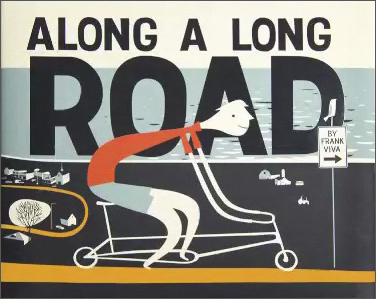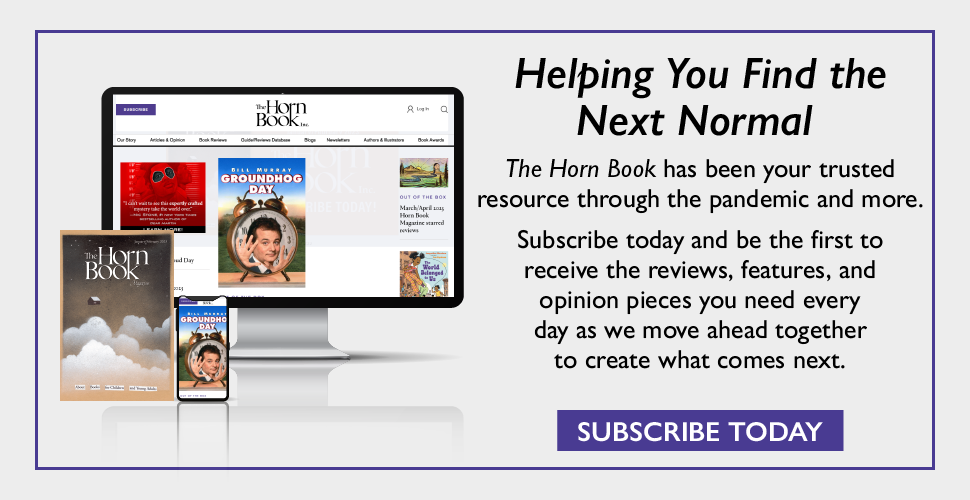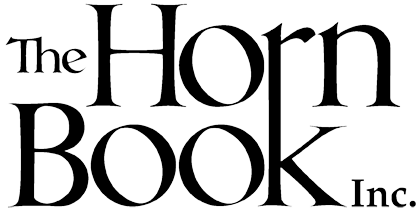In rounding up what we think are the best picture books of the year and discussing them through a Caldecott committee lens, it can be easy to assume that we are looking for the best picture books of the year, period.
 In rounding up what we think are the best picture books of the year and discussing them through a Caldecott committee lens, it can be easy to assume that we are looking for the best picture books of the year, period. But we're not really, because the Medal can't go to an illustrator who isn't resident in the U.S. or to a book that was published outside the U.S.
In rounding up what we think are the best picture books of the year and discussing them through a Caldecott committee lens, it can be easy to assume that we are looking for the best picture books of the year, period. But we're not really, because the Medal can't go to an illustrator who isn't resident in the U.S. or to a book that was published outside the U.S.But we're NOT the Caldecott committee, so I'd like to take the opportunity to discuss two books the committee won't be allowed to mention but that might have a chance if not for, as Gilbert & Sullivan would say, an accident of birth.
One of the most talked-about books this year is Hervé Tullet's Press Here, called Un Livre ("a book") in the French original and in most other translations. I'd like to assume everyone has seen this already, but in case you haven't, this is an excerpt from my review:
...here is an interactive book that gives the iPad a licking, and does it without fancy graphics, tabs, or flaps. Tullet’s modestly proportioned square book goes out of its way to appear low tech with a handwritten all-caps typeface and art so simple it can barely be called art…Speaking directly to the reader, the first spread (“Ready?”) shows a filled-in circle about one inch in diameter apparently drawn quickly with a yellow marker. On the next spread, the same yellow dot appears unchanged while the text reads, “Press here and turn the page.”
Can you guess what happens on the third spread? There are two yellow dots. This is the anti-app, magically showing what a page turn can do -- provided the reader suspends disbelief and keeps on pressing, tilting, blowing, and clapping as the text prompts. Simple and brilliant. But here's my What If question: would such a basic visual treatment put this book out of the running for the Caldecott? I hope not. This book had me falling in love all over again with the picture book form, and it's kid-friendly to boot. (I'm kind of sorry to say that there actually IS an app of this book now, but it only seems to be available overseas.)
 Another book I think the committee would consider if they could is Along a Long Road by Frank Viva. This one didn't get reviewed in the Horn Book Magazine, but it got some love from Leonard Marcus in his column for us and was also on the NY Times 10 Best Illustrated list.
Another book I think the committee would consider if they could is Along a Long Road by Frank Viva. This one didn't get reviewed in the Horn Book Magazine, but it got some love from Leonard Marcus in his column for us and was also on the NY Times 10 Best Illustrated list.This is a concept book (into, over, through; one, two, three) and also a horizontal journey book. Talk about retro, the art not only channels the best of Leonard Weisgard, it also uses an old-timey palette of flat black, brick red, and dusty blue -- plus one long line of shiny mustard yellow road. Everything about this book strikes me as the kind of thing the committee would go nuts over. It begins and ends on the endpapers, the brief text allows the art to do all the heavy lifting, and -- coolest of all -- if you were to lay the pages end-to-end, the yellow line would form a seamless path. What's not to love?
Before I sign off, I need to apologize for being a bad blogger. This undertaking turned out to be more time consuming that I had imagined, and the stress of two jobs in the fall (Horn Book and adjunct teaching) plus some health issues left me with very little energy to spare. My plan at the beginning was to get in at least two posts a week. Oops. If I'm lucky enough to be asked back next year, I promise to do better. In fact, I'm already making notes about a promising batch of early 2012 contenders.
Also note that you will be hearing from both of us with more frequency from here on out. There are many more books to talk about before the awards are announced on January 23, and Robin and I have been cooking up plans to hold a mock vote with all of you. The tech people who deal with the Battle of Books site are working on a ballot system that should replicate the somewhat convoluted Caldecott voting system. Most Caldecott committees find that the results are inconclusive after the first ballot and sometimes even the second one. We want you to get an idea of how this works.
Now...over to you.
What did you think of these two ineligible books? Would they be contenders if things were different? Are there other books you wish were eligible this year?

says
says
says
says
says
says
says
says
says
says
says
says
says
says
says
says
says
says
says
Add Comment :-
RELATED
RECOMMENDED
ALREADY A SUBSCRIBER? LOG IN
We are currently offering this content for free. Sign up now to activate your personal profile, where you can save articles for future viewing.









